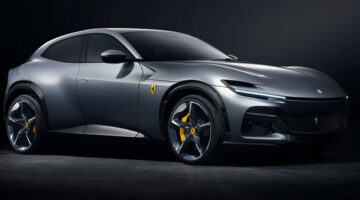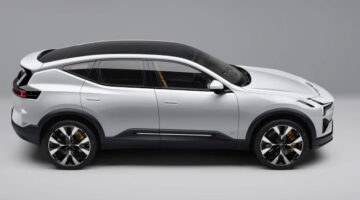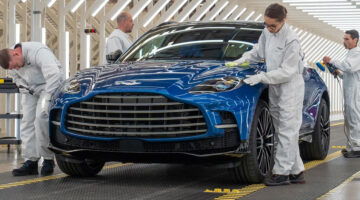So we set off. The L322 starts by twisting a key on the centre console, Saab-style, and the V8 chugs into life. Immediately, upon manoeuvring out into traffic, the steering is heavy. Not shoulder-wrenchingly so, but enough to make you feel like you’re piloting something with volume. The seating position is one of the Range Rover’s key features – high and commanding, even on its lowest setting. A tall driver like me looks down over the bonnet. For a sports car fan it’s an unusual position to be in, but it just feels right in the Range, peering down on mortals.
For a car with such a lengthy life, it feels really solid. I’m confident this one has been well looked after, but even so, creaks and rattles are nowhere near as prevalent as one might expect for a vehicle so experienced. This just goes to show what the new Rangie has to live up to – it’s not enough to be good now, it has to meet the same standards in six years’ time, still have that sense of go-anywhereness. As we weave through traffic in Dubai’s swanky Downtown area I feel like I’m fitting in. Indeed, I see several other models as we go. The only downside to the experience is doing U-turns as photographer James Davison grabs shots. The heavy steering combined with a wide turning circle means it’s not the most stress-free of operations, especially after the umpteenth time of doing it. Nursing my shoulder, I casually mention to Davison that we’ve probably got enough shots in this location.
On the highway out of town the L322 is a chilled out place to be. True, there’s more wind noise than the best of the modern luxury cars, but it’s hardly blowing a gale amid the leather and faux wood. With cruise control enabled my only slight criticism is the somewhat bouncy ride. It’s very well damped but has a vertical wave-riding feel to it as we hurtle towards the golden dunes north of Dubai.
Once we’ve turned off the highway and onto a tight, winding road that undulates through the sand, I get a chance to see what this big, heavy car is like when handling really becomes important. The answer is, in the grand scheme of things, not very good. But for a car that weighs almost 2.5 tonnes, really not too bad. This is a road that would tax almost any car, and for a big hunk of metal with a high centre of gravity, the Range Rover behaves very well. The 4.2-litre engine is noticeably not as strong as the 5-litre. It’s still quick, with a sharp throttle response but once you get that initial bite of response with a flex of the right foot, and hear the whine of the supercharger resonate into the cabin, it then lacks the punch that I’ve grown accustomed to from the new unit in both Land Rovers and Jaguars. That said, it’s still very smooth in its delivery, with the bulk of the pull above around 4500rpm. The transmission is a touch agricultural and may be the feature that feels like its aged the most. There are no paddles on the wheel, so the full sporty experience remains some way away.
In addition, the brakes feel somewhat soft which on occasion makes stopping before the corner a mild concern, but it’s remarkable how well the Range behaves considering the amount of inertia it’s throwing at each bend. There’s more body roll than is ideal, but just as I’m getting concerned the car steadies itself, takes a breath and responds as it looks towards the next apex.
All that said, James appears to have no issues in keeping up with me at all. So it’s about time to see what the fuss is all about. I’ll cover the aesthetics and driving environment shortly, but first things first – I want to know how well the L405 drives. Land Rover has trumpeted its achievements in taking hundreds of kilos out of the new Range, through the use of an all-aluminium body for the first time. And immediately it’s clear just how much difference this makes. There’s less work for the car’s suspension to do in containing the momentum of the car, and on top of that there are plenty of other tweaks that, even without the diet, would make things better. Clever electronics control the torque to each wheel ensuring that the power instantly goes to where it’s needed, allowing the Range to hook up out of each corner and power towards the next. And power is the word – the supercharged 5-litre V8 is one we’re well familiar with already, but it still astounds with its almost digital application of grunt. It’s so refined, so strong everywhere in the rev range, and makes the not-bad 4.2 seem archaic by comparison.
– FULL GALLERY OF SHOTS AVAILABLE HERE – CLICK –
Story concludes on page 3



